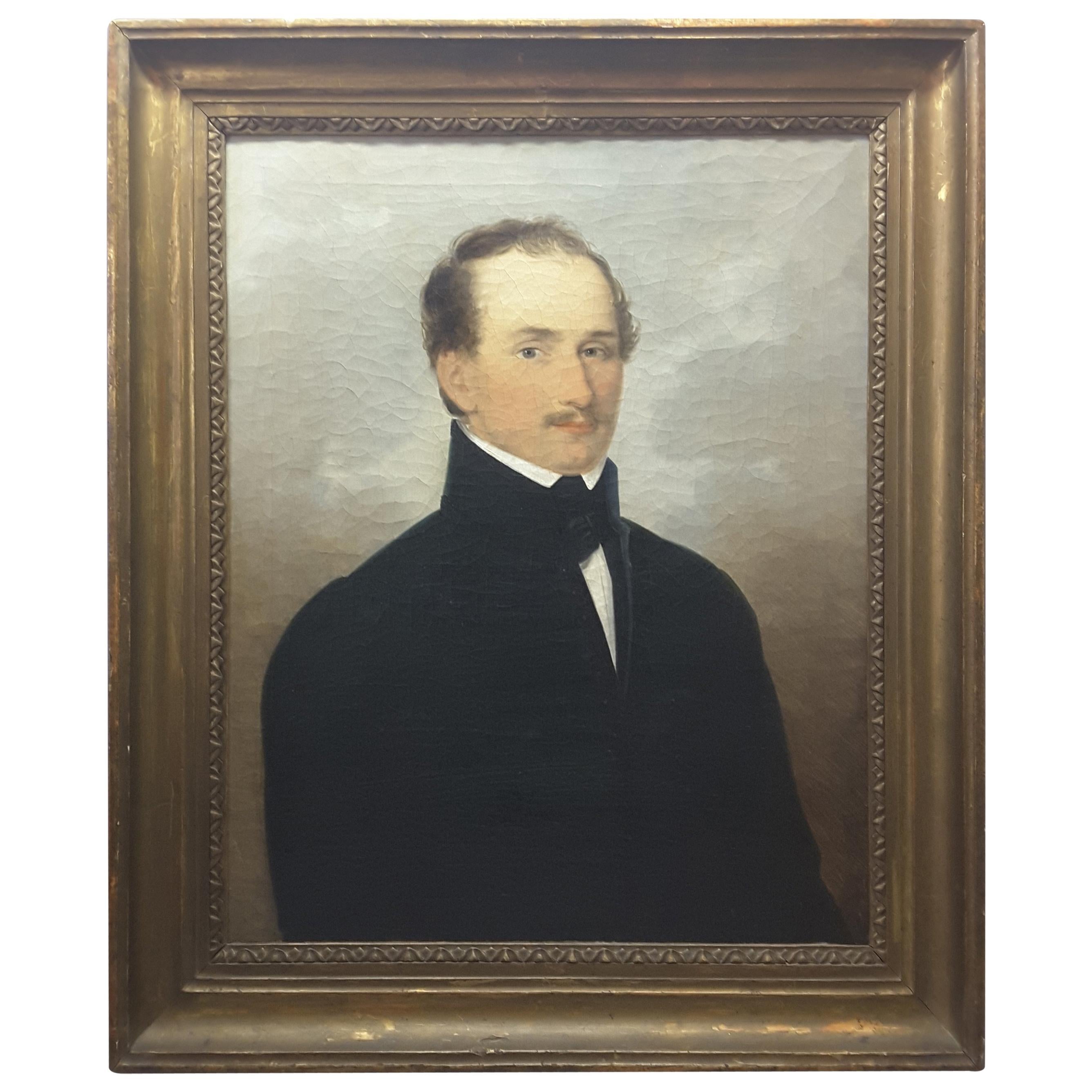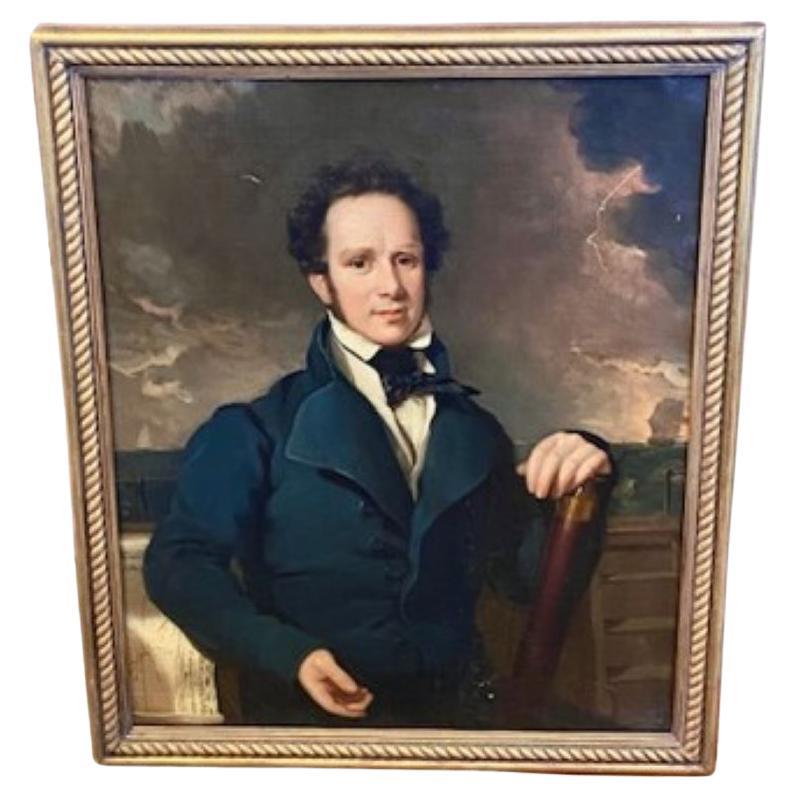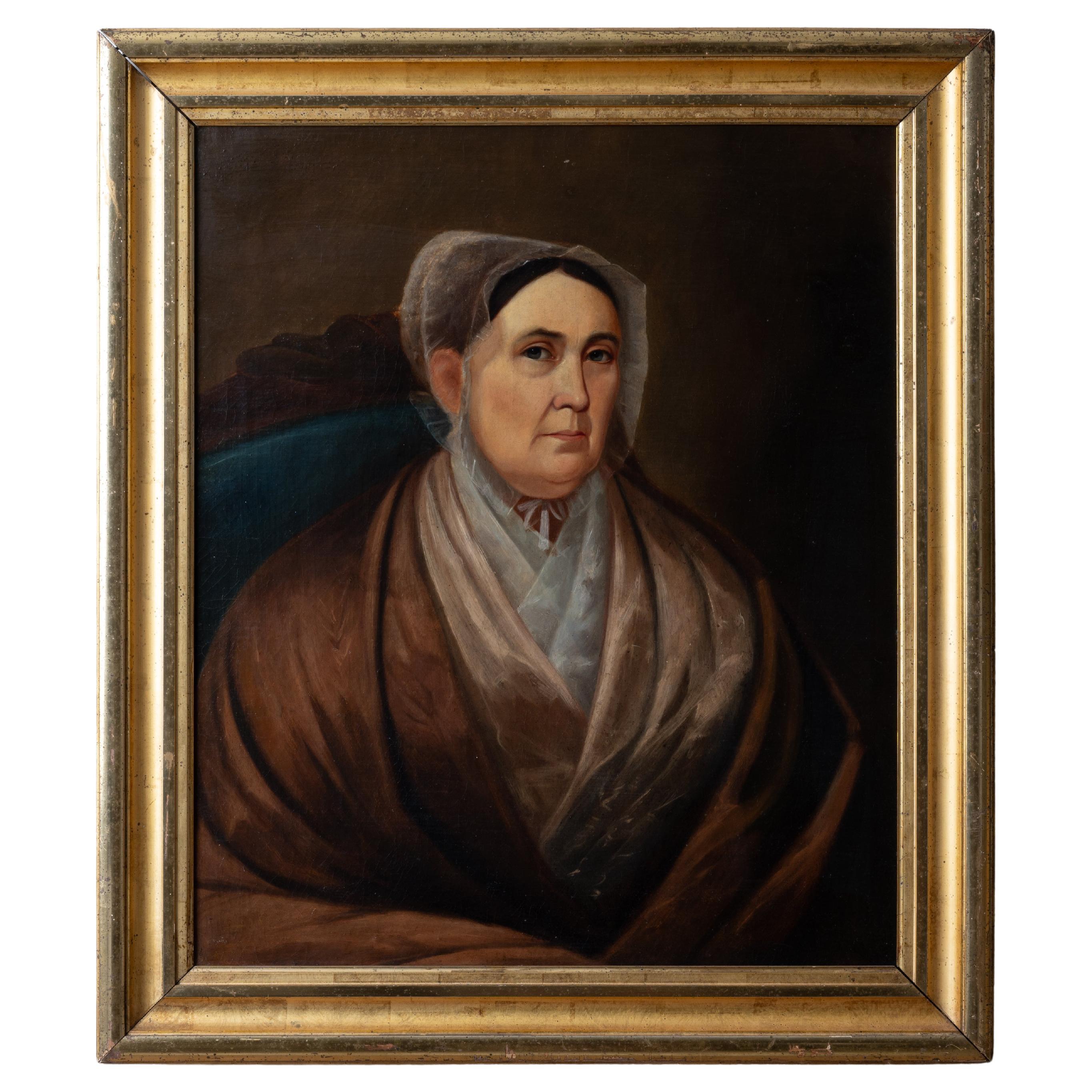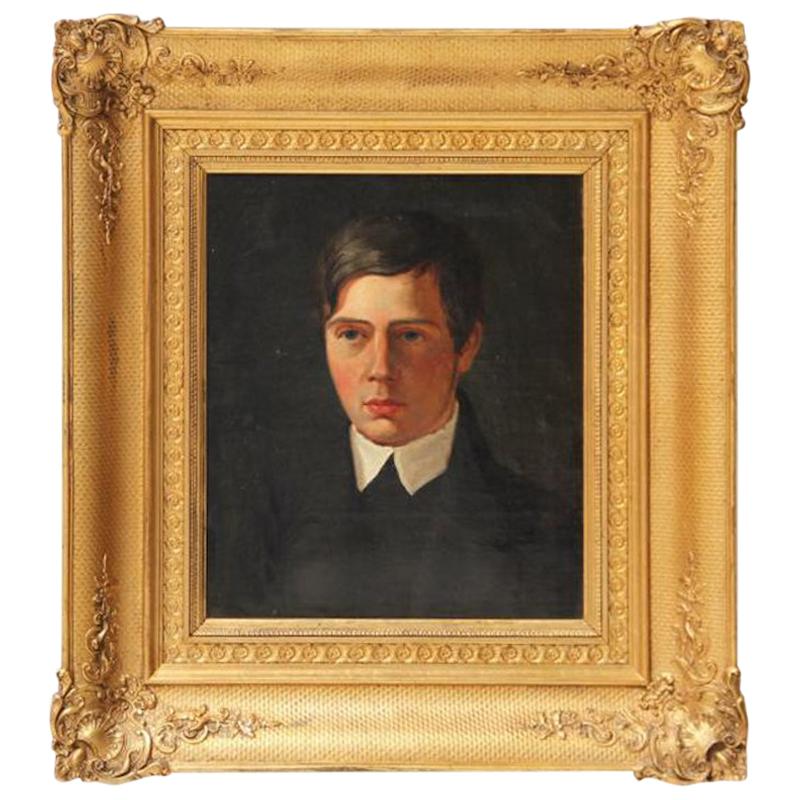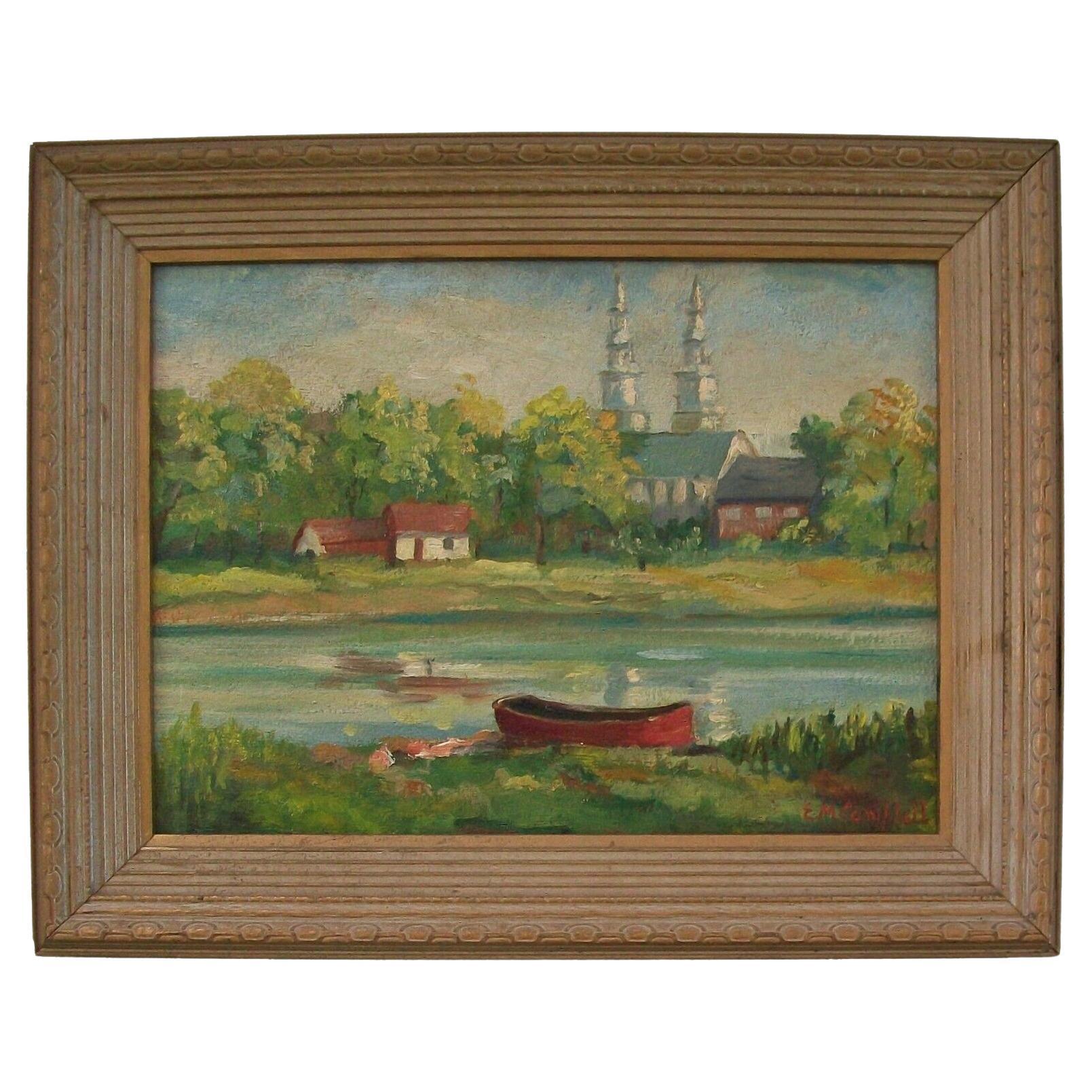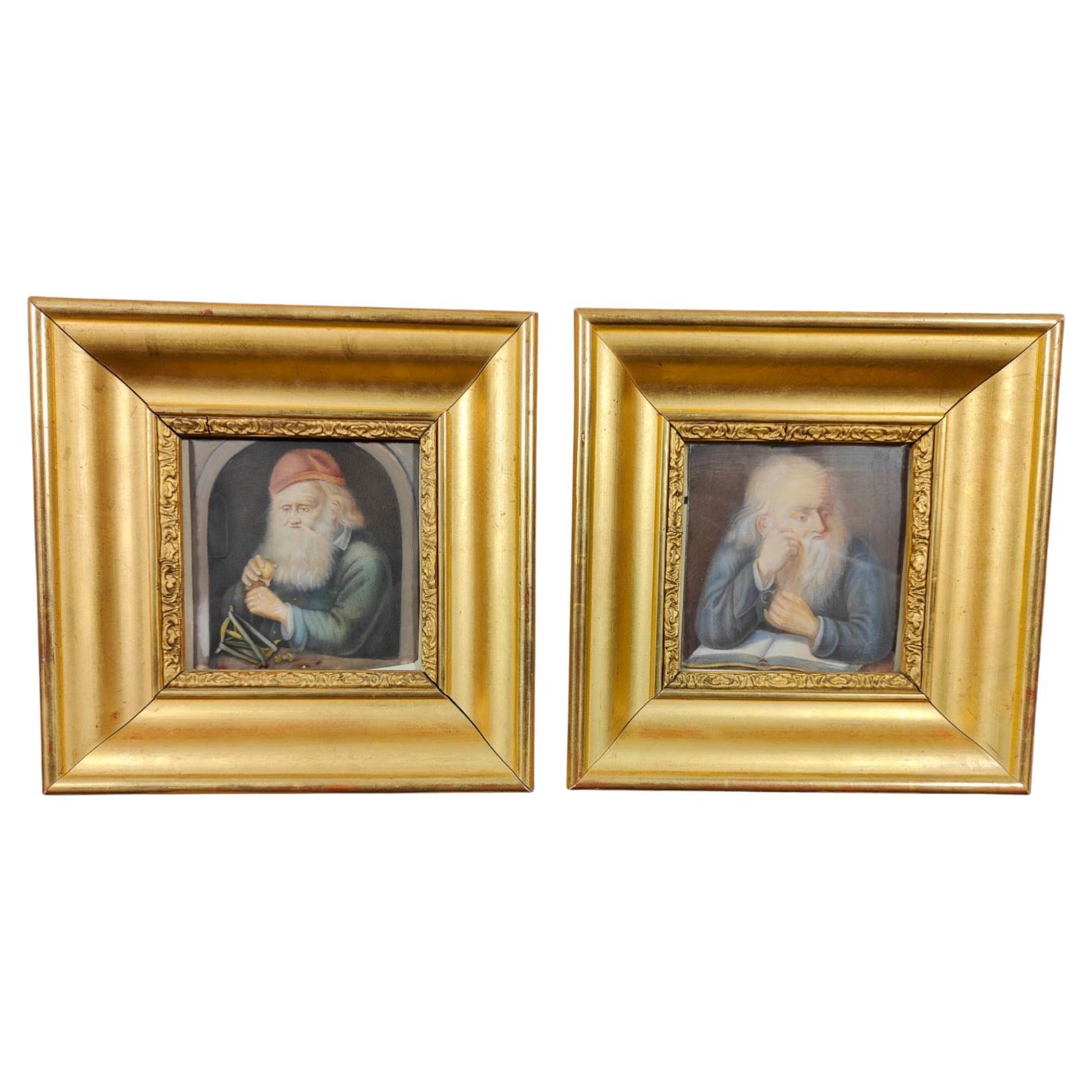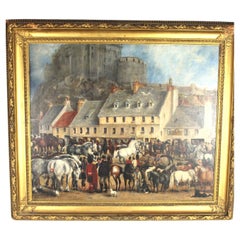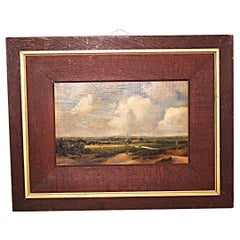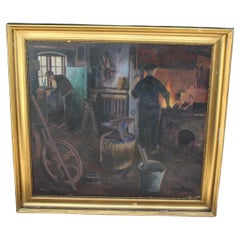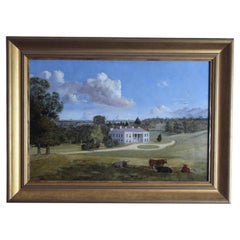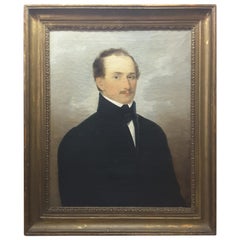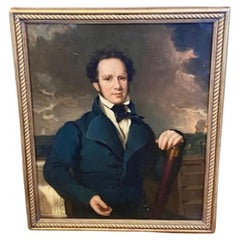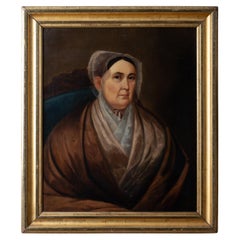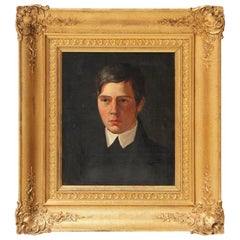Items Similar to 19th century portrait of William Morton Civil Railway Engineer
Want more images or videos?
Request additional images or videos from the seller
1 of 11
19th century portrait of William Morton Civil Railway Engineer
About the Item
19th-Century Portrait of William Morton, Civil Engineer
Inscribed top left William Morton at 50 1882
Step into history with this exceptional 19th-century portrait of William Morton, a pioneering civil engineer. His groundbreaking work helped shape the future of transportation. Best known for his contributions to the East Lincolnshire Railway, Morton also played a vital role in several major projects. As a result, his expertise left a lasting mark on civil engineering.
Key Contributions to Civil Engineering
Throughout his career, Morton worked on several transformative projects, including:
East Lincolnshire Railway – One of his most significant achievements in railway construction.
Portugal Railway – As superintendent, he helped advance international rail networks, improving connectivity.
Metropolitan Line (London Underground) – His engineering skills contributed significantly to the development of urban transit.
Liverpool Central Station & Mersey Tunnel – These projects further highlighted his innovative approach and technical expertise.
This remarkable 19th-century portrait captures Morton’s dignified presence. His intense focus and determination are evident in the artwork. Moreover, the detailed brushwork brings his legacy to life, making this painting much more than just art. Instead, it is a piece of civil engineering history.
Why Choose This Portrait?
Whether you are a collector, historian, or admirer of Victorian art, this portrait offers a rare opportunity to own a part of history. Not only does it represent the life and achievements of a remarkable engineer, but it also serves as a fine example of 19th-century portraiture. With its rich historical background and exquisite craftsmanship, this painting will undoubtedly make a stunning and meaningful addition to any collection.
Condition
Minor paint loss in the bottom left corner.
Some visible areas of craquelure are typical for a painting of this age.
It would benefit from a light professional cleaning to enhance its appearance.
Don’t miss the chance to own this historically significant portrait. It is not only a tribute to William Morton, an engineer whose work shaped modern infrastructure, but also a timeless piece of art that continues to inspire today.
- Dimensions:Height: 17.33 in (44 cm)Width: 14.97 in (38 cm)Depth: 1.19 in (3 cm)
- Style:Victorian (Of the Period)
- Materials and Techniques:
- Place of Origin:
- Period:
- Date of Manufacture:1882
- Condition:Wear consistent with age and use. Minor losses.
- Seller Location:Seaford, GB
- Reference Number:1stDibs: LU10376245073402
About the Seller
New to 1stDibs
Joined in the past six months.
No Reviews Yet
Vetted Professional Seller
Every seller passes strict standards for authenticity and reliability
1stDibs seller since 2025
Typical response time: 3 hours
- ShippingRetrieving quote...Shipping from: Seaford, United Kingdom
- Return Policy
Authenticity Guarantee
In the unlikely event there’s an issue with an item’s authenticity, contact us within 1 year for a full refund. DetailsMoney-Back Guarantee
If your item is not as described, is damaged in transit, or does not arrive, contact us within 7 days for a full refund. Details24-Hour Cancellation
You have a 24-hour grace period in which to reconsider your purchase, with no questions asked.Vetted Professional Sellers
Our world-class sellers must adhere to strict standards for service and quality, maintaining the integrity of our listings.Price-Match Guarantee
If you find that a seller listed the same item for a lower price elsewhere, we’ll match it.Trusted Global Delivery
Our best-in-class carrier network provides specialized shipping options worldwide, including custom delivery.More From This Seller
View All19th-century Horse Painting
By Rosa Bonheur
Located in Seaford, GB
A rare 19th-century painting of the Horsefair at the Grassmarket, Edinburgh, Scotland
Follower of Rosa Bonheur, oil on canvas
indistinctive collector wax seals verso.
19th-Century...
Category
Antique 1860s British High Victorian Paintings
Materials
Canvas
$10,172
Dutch 19th century Landscape Painting
By Andreas Schelfhout
Located in Seaford, GB
This charming oil-on-paper painting captures a serene landscape near Haarlem, evocative of Andreas Schelfhout's masterful Dutch Romantic style. The work features a quintessentially D...
Category
Antique Late 19th Century Dutch Late Victorian Paintings
Materials
Paint, Paper
19th century Danish BlackSmiths Forge by Edvard Petersen
Located in Seaford, GB
Atmospheric Blacksmith Forge Interior by Edvard Petersen signed by monogram
This magnificent late 19th-century painting of an atmospheric blacksmith forge interior is by the renowned realist Danish painter Edvard Petersen. Depicting a richly detailed industrial workshop scene, it is a remarkable example of Danish realism. As an authentic Edvard Petersen painting, it showcases the artist’s dedication to portraying the lives of craftsmen and workers in the late 1800s.
If you are an art collector or enthusiast seeking to purchase an original blacksmith interior artwork, this vintage realism painting not only holds artistic value but also represents an essential piece of Danish heritage art. Below, we explore the painting’s intricate details, its historical context, and Edvard Petersen's life.
1. Artwork Overview: A Glimpse into the Industrial Past
This vintage painting of a blacksmith’s forge reflects the hardworking spirit of the late 19th century. The atmospheric industrial art is meticulously rendered with a keen eye for lighting, texture, and realism. Key aspects of this Danish blacksmith workshop artwork include:
Industrial Setting: The painting captures the interior of a blacksmith workshop, filled with well-used tools and the dim glow of the forge.
Lighting Mastery: The late 19th-century atmospheric blacksmith interior is defined by its masterful use of light and shadow. The forge fire creates a vivid, warm glow, contrasting with the cooler daylight filtering through a window.
Human Element: The blacksmith figures appear in dynamic postures, emphasising the laborious nature of their craft. The workers’ silhouettes against the glow of the fire add depth and dimension.
Textural Details: The texture of worn wood, metal tools, and stone flooring is painstakingly realistic, typical of Edvard Petersen’s style.
2. Artistic Style and Techniques
A. Realism and Atmosphere
As a prominent Danish realist painting, this work exemplifies the realist tradition for which Petersen is known. His choice of subdued, earthy tones highlights the authentic industrial atmosphere. The blend of warm, fiery hues with darker, shadowy tones creates a dramatic and contemplative mood.
B. Composition and Structure
The composition follows a well-organised structure, with:
Foreground Elements: Anvil, tools, and a large wooden barrel.
Middle Ground: Figures working at the forge and a workbench.
Background: The illuminated workshop window and hanging tools.
Colour Palette: Predominantly browns, greys, and ochres with contrasting fiery highlights.
Lighting Effect: The combination of natural and artificial lighting enhances the sense of depth and space.
3. Significance of the Painting
A. Cultural Context
This late 19th-century blacksmith painting...
Category
Antique 1890s Danish High Victorian Paintings
Materials
Canvas, Paint
English School 19th Century Country House Landscape Oil Painting
Located in Seaford, GB
19th-century painting of Warlies House, Essex
This captivating mid-19th-century oil on panel painting exemplifies the idyllic charm of pastoral landscapes from the period, featuring...
Category
Antique 1870s English Victorian Paintings
Materials
Paint
Exquisite 19th Century English Still Life – Oil on Wood Panel
Located in Seaford, GB
A captivating and finely executed 19th-century English still life painting, rendered in oil on wood panel, depicting an abundant bouquet of mixed flowers in a terracotta urn. This hi...
Category
Antique 19th Century English High Victorian Paintings
Materials
Paint
Early 19th century Capriccio Brazil School Painting
Located in Seaford, GB
Rare Early 19th century Capriccio view of Rio de Janeiro Painting
Probably painted circa 1810 by one of Jean-Baptiste Debret, Italian Students.
Painted on Sailcloth.
Historical Context of Early 19th Century Portuguese Colonial Brazil
1.1 Transition from Colony to Empire
During the early 19th century, Brazil underwent a seismic shift in its political status. Originally a colony under the Portuguese Empire, the arrival of the Portuguese Royal Court in Rio de Janeiro in 1808 rapidly elevated the city’s cultural and political importance. By 1815, Brazil was declared a kingdom united with Portugal, setting the stage for the emergence of the Empire of Brazil in 1822. This period of transformation—often termed the transitional period from colony to empire—fueled a wave of artistic production in cities like Rio de Janeiro.
1.2 European Artistic Influence in Brazil
With the French Artistic Mission in Rio (initiated in 1816) and the presence of various Portuguese and European artists, Brazilian art of the early 1800s began to reflect diverse influences, from neoclassical painting to the early rumblings of romanticism. Painters such as Jean-Baptiste Debret, and Nicolas-Antoine Taunay, and local luminaries like Manuel de Araújo Porto-Alegre contributed to the fine arts tradition in Brazil. Their works featured scenes of local life, portraits of Brazilian society, and imaginative vistas—sometimes referred to as “capriccios,” in which real elements were combined with artistic liberties to create an idealized panorama.
1.3 Rio de Janeiro as Cultural and Political Hub
Rio de Janeiro, often called the Imperial capital after Brazil’s independence, was home to foundational institutions like the Imperial Academy of Fine Arts (Academia Imperial de Belas Artes). Later evolving into the Escola de Belas Artes (School of Fine Arts in Rio), these academies nurtured the talents of emerging painters, who found patronage under the Royal Court and, subsequently, the Imperial Court. The city’s significance was further enhanced by the construction of significant buildings, the modernization of infrastructure, and the mingling of European courtly customs with the traditions of local inhabitants.
. Description of the Octagonal Oil on Canvas: A Capriccio View of Rio de Janeiro
2.1 Composition and Layout
The most striking characteristic of this 19th-century Brazilian art piece is its octagonal shape, a relatively unusual format that draws the viewer’s gaze toward its centre. The composition showcases Rio de Janeiro’s shoreline in the early 1800s, brimming with merchant ships and smaller boats anchored near the shore. On the sand, there is a bustling crowd of local people—men and women carrying food and goods on their heads, loading and unloading boats, and engaging in everyday commerce. The backdrop of soaring mountains suggests Rio’s iconic topography, embodying the landscape that famously defines the city.
2.2 Architectural and Religious Landmarks
On the left side, one can discern the silhouette of a church believed to be Santa Lucia, a significant religious structure in the heart of early 19th-century Rio. This element provides viewers with a tangible reference point, linking the scene to an actual location. However, because this painting is labelled as a “capriccio,” the artist might have taken creative liberties by rearranging or amplifying certain features of the city. The melding of real and idealized elements is characteristic of these imaginative vistas.
2.3 Evoking Daily Life in Colonial Rio
One of the painting’s greatest appeals lies in its portrayal of daily life during the colonial era. Men and women from various backgrounds populate the scene. Some appear to be carrying goods on their heads, a common practice in Brazil that has persisted through different centuries. Others appear to be haggling or trading near small vessels, revealing the commercial pulse of an active port city. This focus on local people, combined with the grandeur of merchant ships, captures the tension and synergy between the every day and the extraordinary—a hallmark of Brazilian colonial painting that balances the grand narratives of empire with the rhythms of ordinary life.
2.4 An Amalgamation of Neoclassical and Romantic Influences
Although academic art in early 19th century Brazil was highly influenced by neoclassicism, the onset of romanticism can be spotted in the emotional portrayal of the sky, the lively palette, and the dramatic emphasis on nature’s beauty (the mountains, in particular). This duality reflects the fine arts tradition in Brazil during the transitional phase when artists were embracing multiple styles. As part of the School of Rio or the Rio de Janeiro school, painters often integrated academic techniques learned from European masters with emerging local subjects and influences.
3. Institutions and Artistic Movements
3.1 Imperial Academy of Fine Arts
Originally known as the Royal School of Sciences, Arts, and Crafts, the Imperial Academy of Fine Arts in Rio de Janeiro was instrumental in shaping 19th-century Brazilian art. Influential artists and teachers from Portugal, France, and other European nations congregated at the Academy, imparting their expertise to native students. As the monarchy consolidated power, the Academy enjoyed royal patronage, leading to the creation of Imperial Academy-style works that combined European academic rigour with Brazilian-themed subject matter.
3.2 Impact of the French Artistic Mission
The French Artistic Mission, which arrived in 1816, played a pivotal role in introducing advanced European artistic techniques, thereby elevating the overall quality of painting in Brazil. Artists like Jean-Baptiste Debret not only documented Brazilian society but also spearheaded the development of a local visual identity that aligned with both academicism and the national context of a blossoming empire. Debret, alongside others such as Nicolas-Antoine Taunay, mentored Brazilian artists, sowing the seeds of what would become the Brazilian academic art movement.
3.3 Religious, Historical, and Landscape Paintings
In addition to everyday scenes and historical compositions, religious iconography remained crucial throughout Portuguese colonial and imperial Brazil. Churches were omnipresent in cityscapes like Rio de Janeiro. Many colonial-era Brazilian portraits...
Category
Antique Early 19th Century Brazilian Spanish Colonial Paintings
Materials
Canvas
You May Also Like
English 19th Century Portrait of a Gentleman
Located in Ottawa, Ontario
An English 19th century portrait of a gentleman, oil on canvas, original frame and stretcher, crackle paint typical of older pain...
Category
Antique Mid-19th Century English Victorian Decorative Art
Materials
Paint
Early 19th Century Portrait of Naval Captain William Compton Bolton
Located in Nantucket, MA
Early 19th Century Portrait of Naval Captain William Compton Bolton (Anglo-American: 1799 - 1849), circa 1830s, an oil on canvas half-length portrait of a sea captain holding a spygl...
Category
Antique 1830s American Federal Paintings
Materials
Canvas
Primitive Portrait of a Lady, 19th Century
Located in Savannah, GA
A primitive portrait of a lady, mid 19th century.
canvas: 25 by 30 inches
frame: 31 by 36 inches
Category
Antique Mid-19th Century American Primitive Paintings
Materials
Paint
Portrait of a Young Man, Danish School, Late 19th Century
Located in CA, CA
A beautifully painted portrait of a handsome young man from the Danish modern school dating from the late 19th century, in a carved gold frame from the same period.
The painting is ...
Category
Antique Late 19th Century Danish Late Victorian Paintings
Materials
Paint
Edward Morton Campbell, Framed Landscape Painting, U. S., Late 19th Century
Located in Chatham, ON
Edward Morton Campbell (1858-1911) - "Untitled" - American Impressionist fine art landscape oil painting on prepared heavy pressed paper panel - signed lower right - contained in an ...
Category
Antique Late 19th Century American American Classical Paintings
Materials
Softwood, Paint
$1,750 Sale Price
30% Off
Pair of Portraits on Ivory 19th Century
Located in Madrid, ES
Pair of portraits on ivory. Old renascentist portraits on ivory plate with golden wooden frame. Each measures: 21x21 and 11x11 cm.
Good condition.
Category
Antique 19th Century French Renaissance Paintings
Materials
Paint
$1,254 / set
